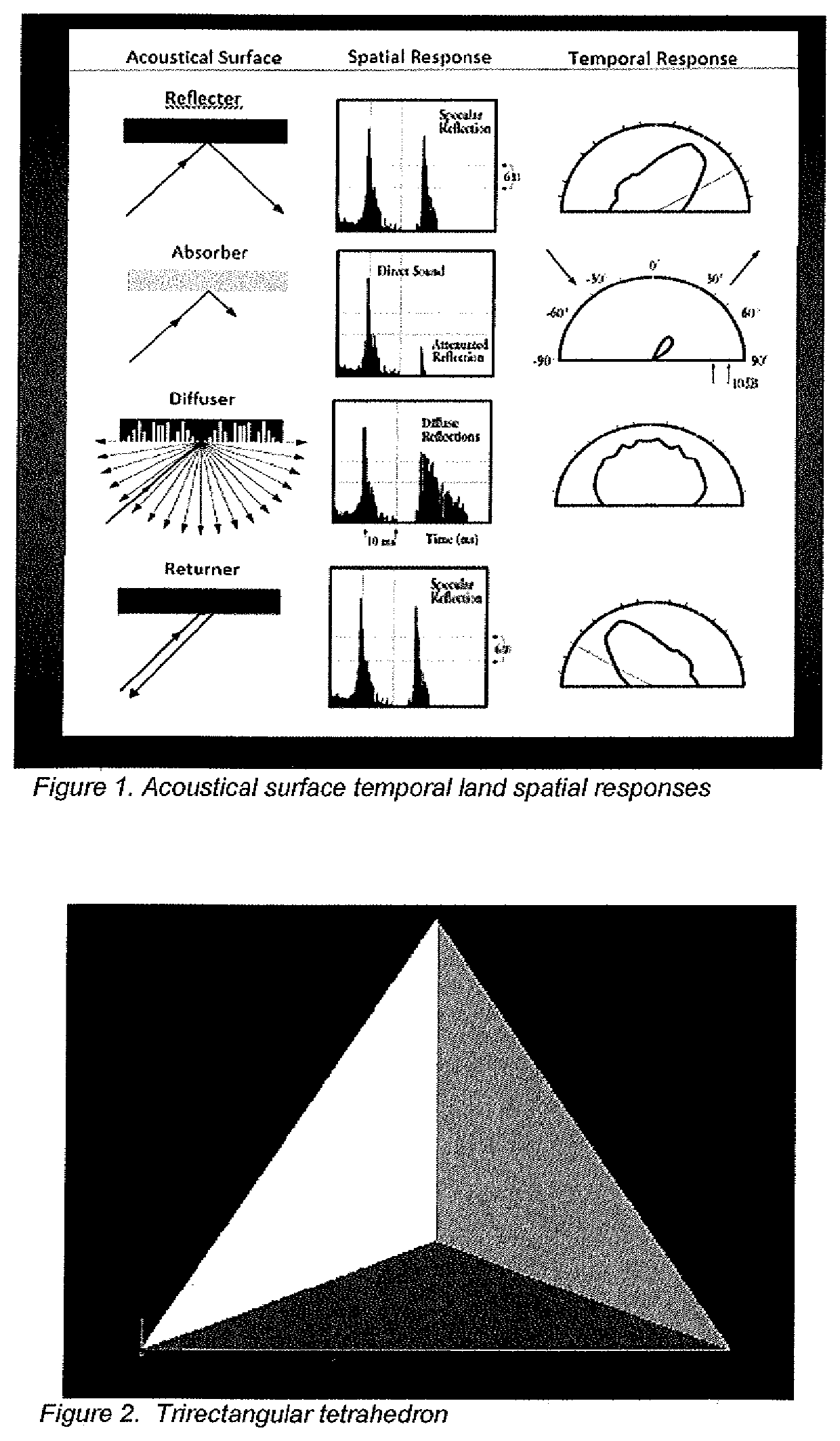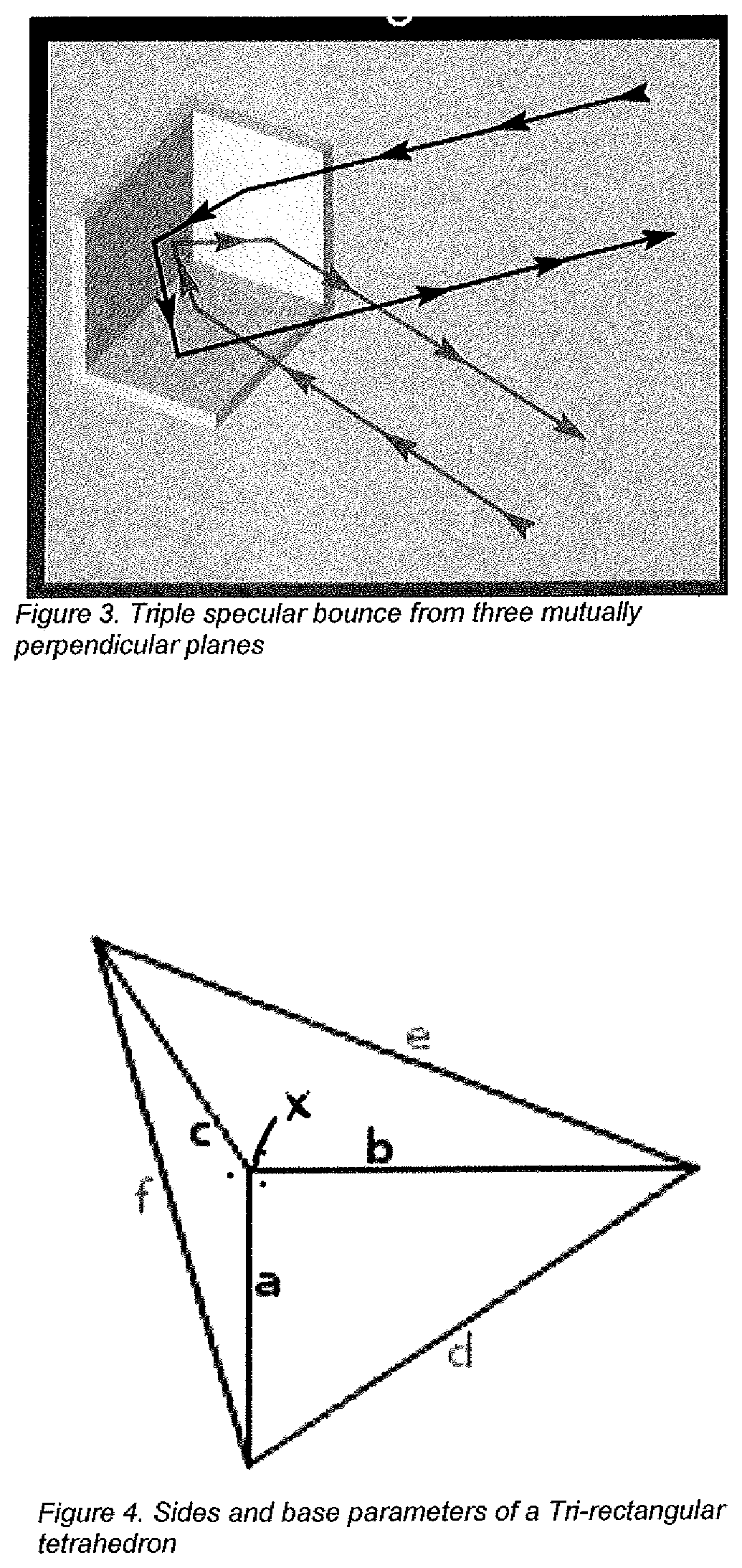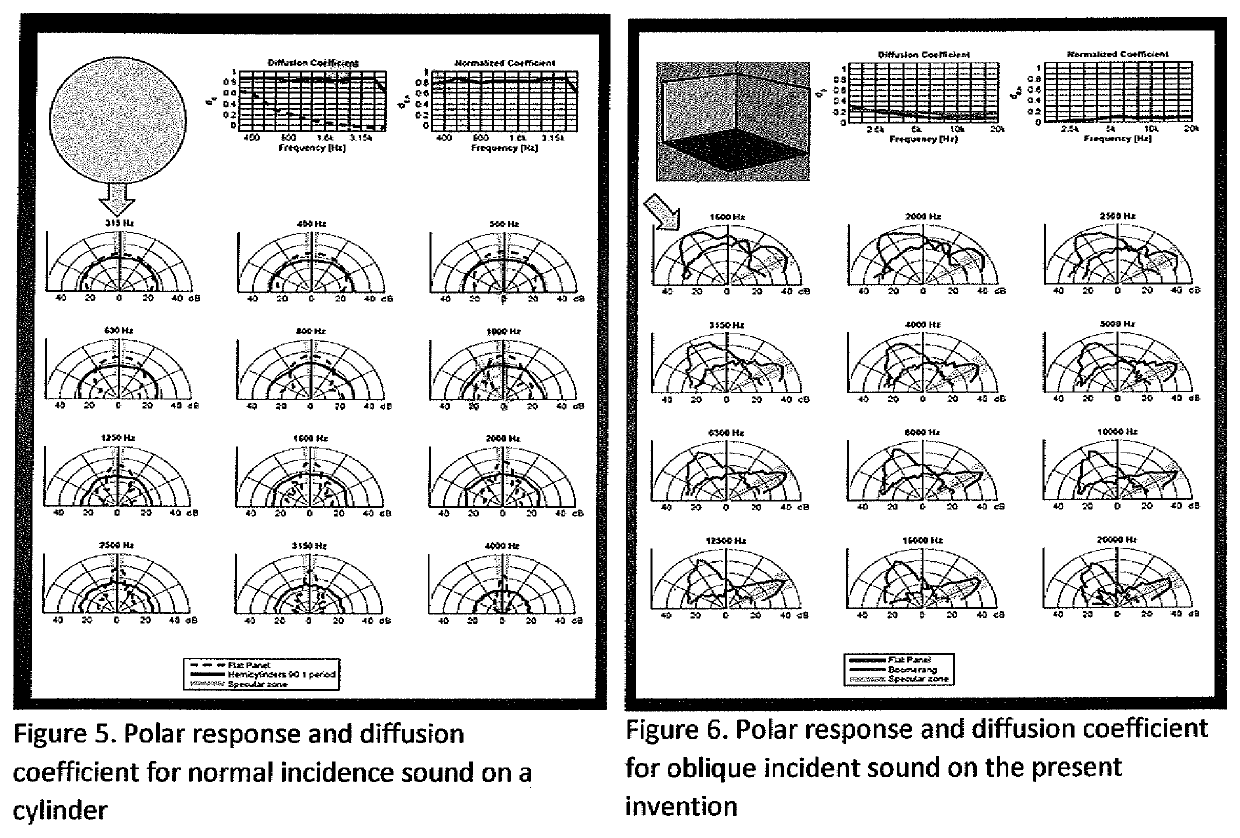Array of acoustical returner devices to reflect sound back in the incident direction
a technology of acoustical returner and incident direction, which is applied in the direction of sound producing devices, instruments, etc., can solve the problems of reducing the signal to noise (snr) value, degrading speech intelligibility, and masking of high-frequency consonants by low-frequency vowel sounds, so as to reduce the self-made sound and increase the volume
- Summary
- Abstract
- Description
- Claims
- Application Information
AI Technical Summary
Benefits of technology
Problems solved by technology
Method used
Image
Examples
Embodiment Construction
[0034]With reference first to FIG. 1, a chart is shown which provides the spatial response and temporal response for four types of acoustical treatments. Those types are reflectors, absorbers, diffusers, and returners. As seen in FIG. 1, in a reflector, incident sound is reflected forward at an angle corresponding to the angle of incidence. The ideal reflector reflects as much of the sound as is possible. In an absorber, a percentage of the incident sound is absorbed by the absorber so that sound emanating from the absorber is reduced particularly in amplitude. A diffuser takes incident sound and diffuses it, preferably uniformly about a listening room. A returner returns the sound back to its source. The present invention is concerned with returners.
[0035]FIG. 2 shows a front view of a tri-rectangular tetrahedron. As shown in FIG. 2, such a device is made up of walls having three mutually perpendicular surfaces. In FIG. 2, those surfaces consist of triangles.
[0036]With reference to...
PUM
 Login to View More
Login to View More Abstract
Description
Claims
Application Information
 Login to View More
Login to View More - R&D
- Intellectual Property
- Life Sciences
- Materials
- Tech Scout
- Unparalleled Data Quality
- Higher Quality Content
- 60% Fewer Hallucinations
Browse by: Latest US Patents, China's latest patents, Technical Efficacy Thesaurus, Application Domain, Technology Topic, Popular Technical Reports.
© 2025 PatSnap. All rights reserved.Legal|Privacy policy|Modern Slavery Act Transparency Statement|Sitemap|About US| Contact US: help@patsnap.com



